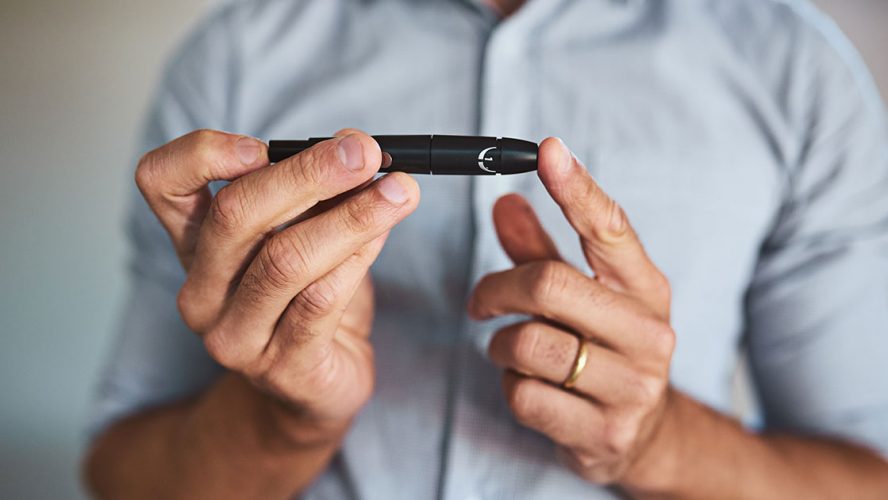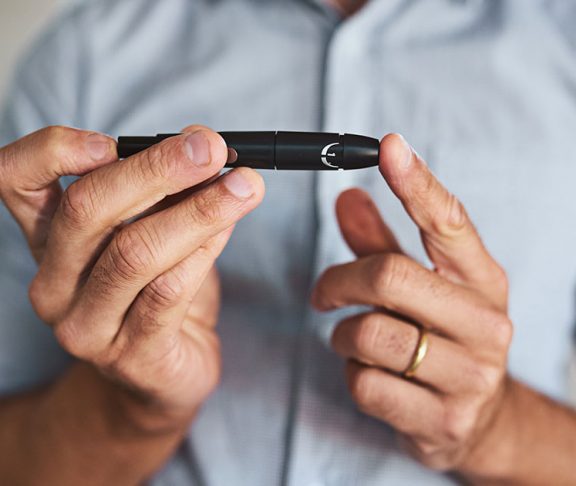Diabetes is a disease defined by higher-than-normal blood glucose levels. There are two main types of diabetes: Type 1 and Type 2, plus a condition called gestational diabetes that occurs during pregnancy. While Type 1 and Type 2 diabetes are quite different in how they begin, they are very similar in the serious health consequences they can cause — damage to the nerves and to the large and small blood vessels of the body. This damage can result in heart attack, stroke, retinopathy (an eye disease that can lead to blindness), nephropathy (kidney disease) and neuropathy (nerve damage which can lead to amputation).
Fortunately, great strides have been made in treating diabetes, and the outlook for someone diagnosed with diabetes today is vastly better than it was even a generation ago.
Type 1 diabetes
With Type 1 diabetes, the body’s immune system mistakenly destroys the insulin-producing beta cells in the pancreas. Without insulin, other organs in the body struggle to function properly, which leads to serious complications. This can happen over a few weeks, months or years, and Type 1 diabetes can develop at any age.
People with Type 1 diabetes must have insulin to survive (though many people with Type 2 diabetes also use insulin). For decades, insulin was administered via a syringe and injection under the skin. Today, the insulin in those vials has been improved dramatically, and the syringes and needles have improved greatly as well. Many people also use insulin pens, which are self-contained, insulin cartridge-and-needle delivery systems that are more portable than glass vials and syringes. This makes it easier to deliver more precise doses of insulin. Insulin pumps have also become widely used the past few years. Pumps allow a continuous dose of insulin just under the skin, plus the ability to deliver larger doses at mealtime.
Type 2 diabetes
In most cases of Type 2 diabetes, the body does not use insulin properly because of a condition called insulin resistance. The pancreas produces insulin, but the insulin resistance does not allow the body to process and use the insulin appropriately or efficiently. The degree of insulin resistance varies from person to person; some people with Type 2 diabetes have relatively low levels of insulin resistance, and the primary problem is that insulin production of the pancreas is impaired.
Lifestyle modification — to achieve a healthy weight through increased physical activity and healthy nutrition habits — is the cornerstone of managing Type 2 diabetes. Most people with Type 2 diabetes also need one or more medications to help keep their blood glucose stable. For several decades, metformin has been the first line of treatment and has proven to be very effective, safe and inexpensive. In the past 10 to 15 years, a number of new types of Type 2 diabetes medications can work in tandem with metformin to reduce blood glucose levels. Some of these drugs also have beneficial effects on weight, blood pressure and cholesterol levels, as well as reduce the effects of cardiovascular disease.
People with Type 1 and Type 2 diabetes can also benefit from other recent advances in diabetes management, particularly devices used to measure blood glucose levels. Glucose meters have become small and fast and are able to use a tiny drop of blood to measure blood glucose. These advances, coupled with the improved drugs and delivery systems, have made a dramatic difference in improving the day-to-day life of millions of people living with diabetes.

